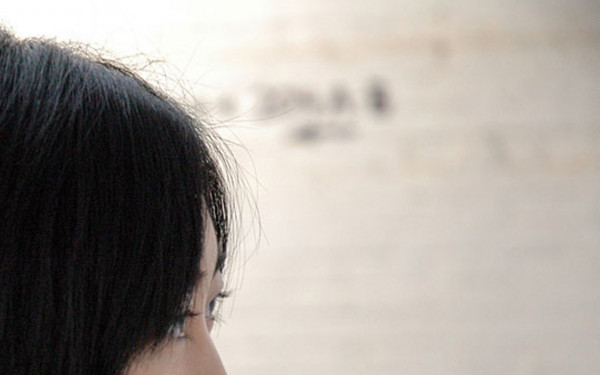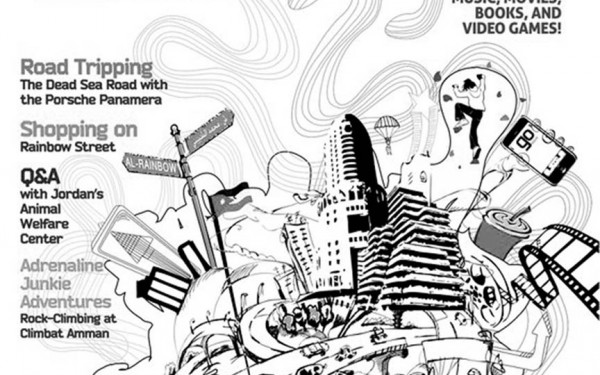Ich Bin Ein Partier
How Underground Raves Bridged the Culture Gap in late 80’s Berlin
For the forty-odd years that it was divided, Berlin was dominated by big personalities, big speeches and big events.
Characters like John F. Kennedy, Mikhail Gorbachev and Ronald Reagan all left their mark on the city, using it as the focal point of their war of ideologies.
Those are the guys who will be mentioned in history books—but they don’t tell the whole story.
Oct. 3 marked the 20th anniversary of an officially reunified Germany, 11 months after Gorbachev tore down that wall. Needless to say, this economic and political achievement was something of a formality—the real unification was lying in the people, and had already been taking place for quite some time in abandoned factory cellars.
Derelict Dancehalls
The techno underground had already begun to take root in West Berlin at the end of the ‘80s, based on the Detroit and Chicago club scenes and bands like Kraftwerk, Depeche Mode, New Order, Les Rita Mitsouko and Suicide.
DJs Matthias Roeingh, a.k.a. Dr. Motte, and Maximilian Lenz, a.k.a.WestBam, created a club called UFO, which became the seed of Berlin’s club culture. Unofficially founded in 1989 in a vacant cellar in West Berlin, the club played the latest acid-house music.
Prior to its founding, East Berliners could only hear some of the music over radio transmissions and were limited to making mix-tapes, known as Tapekultur.
“It felt like we were missing out on a lot,” recalled Bastian Von Schlippenbach, a teenager at the time. “We could see their TV and hear their radio, but couldn’t live any of it or have any of that music. What we did have was housing and employment for all, guaranteed. In general I think there were strong desires to be able to freely travel west as pleased, but not necessarily to stay there.”
Berlin in general wasn’t quite at its prime. “West Berlin was an island in East Germany. The neighborhoods along the wall were all abandoned, and industry in West Berlin was stagnant. After reunification, Berlin remained a desolate, economy-less ‘major city.’ A refuge for the arts, but little else,” explained Pablo Beaner Roman-Alcalá, a resident DJ at Bar25.
A third of the buildings in East Berlin lay empty when the wall came down. Most were hidden, had power running and no one looking after them: an ideal playground for Western DJs and party organizers. Ravers rushed to the “wild east.”
The vacancies provided the cradle for the techno underground to burgeon. That, in turn, became the cradle of social reunification for the youth. The two played off each other.
“Parties at that time were illegal/semi-legal events in squatted basements, houses or industrial lofts, initiated by the possibilities the city of Berlin offered—a lot of space to play around with,” said Thomas Rupp, one of the main organizers of the annual Fuckparade techno festival since 1998. “These parties, which were new and exciting to both Eastern and Western kids, plus the affinity for the new type of music, maybe even in conjunction with a new wave of drug/music interaction, opened new relations between both worlds easily.”
It would be logical to assume that the parties confirmed all the stereotypes of western-style capitalism, indulging in the most extreme forms of hedonism. Easterners nonetheless had a reputation for bringing over a taste for particularly hard partying.
A new, exhilarating subculture bloomed. Without cell phones and social networks, locations for raves were communicated by word of mouth and flyers. Smoke filled the spacey-funked cellars, as DJs blasted bowel-bursting bass lines while repetitively flipping the light switch on and off. Parties lasted all night and into the next day.
Bangin’ Heartbeats
“We never had such high political ambitions. Sex, drugs and techno was the motto of the time,” said Rupp.
“On the dance floor, everyone was equal,” recalled Bastian. “Whether you were dancing or DJing, Ossie or Wessie.” A kind of socialism of the dance floor reigned as a retaliation against traditional diskothek elements.
Dr. Motte threw the first Loveparade for his birthday in 1989, months before the wall came down. The first one drew about 150 people. From there, attendance grew at an exponential rate, reaching around 1.5 million by 1999, uniting not only Germans, but ravers from all over the world.
“Party town” Berlin had turned into the “world capital of techno.” They had to pretend to be a political demonstration in order to get permission and funding. The initial motto was Friede, Freude, Eierkuchen (Peace, Joy, Pancakes).
“The political umbrella for the Loveparade was merely one easy way of cost-cutting, as for political demonstrations the city has to pay all resulting costs,” said Rupp.
By 2001, the festival had lost its political status and funding had to come from somewhere else: sponsors. The Loveparade in recent years has been funded in large part by McFit, a German chain of fitness centres. Dr Motte and Westbam no longer participate, citing the commercialization of the festival as their reason for leaving.
“I want to see them in jail,” said Dr. Motte regarding the current organizers and McFit owner Rainer Schaller, citing the fatal trampling of 21 ravers at this years festival, which has been blamed on a lack of space.
“All they want is profit, profit, profit.”
The Politics of Dancing
In 1991, the UFO packed up and soon re-opened—officially this time—as the Tresor, located under the Wertheim department store in East Berlin’s center. The relocation was seen as a controversial move into the mainstream.
Faced with the selling-out of the once-underground subculture, guerilla raves were thrown, free of tourists and the “easy jet-set,” as Tobias Rapp called them. Today, many Berliners only enter clubs at the wee hours once they know tourists are safe and sound in their hostel bunks.
Dr. Motte eventually joined with the Fuckparade as retaliation against the commercialization of his Loveparade. Today, the Fuckparade is fighting alongside Berliners against increased gentrification, privatization and conservative urban politics. The struggle over Berlin’s identity has not been violence-free.
“They just throw tear gas and hit [protesters] with sticks. They don’t listen to them,” said Dr. Motte of protests against city policies.
Beaner summed up the situation this way: “The freeze of arts and the displacement of culture are natural side dishes to the main course of community death that is ‘urban renewal.’ Bar25 employed over 200 people. Bar25 paid its taxes—quite a bit I might add. But Bar25 doesn’t have large amounts of capital on its side. If capital continues to make decisions, Berlin will not be a city of culture. It will be suburbs of culture because the arts will not be able to afford to live in the center.”
The Great Techno Swindle
The very “economy-less” ground zero that gave birth to an international movement and allowed a generation to unite has since matured into the capital of the EU’s leading economy. Berlin’s commercialization has resulted in the decay of the subculture it fostered for 20 years.
But what’s the big deal? We could always mix killer beats for a Hotel Radisson commercial.
This article originally appeared in Volume 31, Issue 10, published October 19, 2010.


_600_832_s.png)


__600_375_90_s_c1.jpg)

__600_375_90_s_c1.jpg)